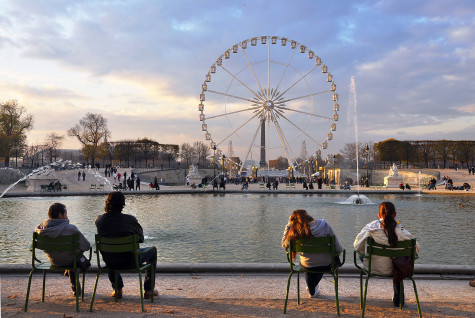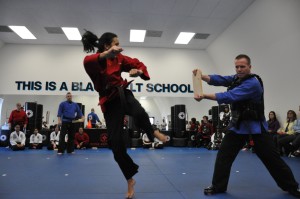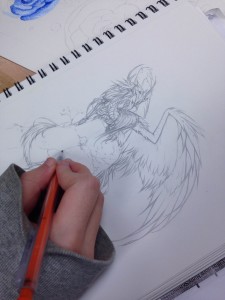Shredding – The story behind local skateboarding and longboarding
Walk into just about any class, and you’re bound to see at least one person wearing Hurley, Element, LRG, or other popular clothing brands associated with skating, readily talking about whatever plans they have for skating in the near future, and comfortably using terms such as “Ollie” or “hardflip”. To the average person, the tight-knit group and culture of skaters may be a bit daunting and mysterious. In reality, there’s nothing to hide, especially why they do it.
“Skateboarding is at a phase where kids think it’s really popular. They’re accepting it into the world,” says David D. of Pitcrew, a skate shop in Frederick. “A lot of people have [skater] role models. It’s growing.”
There are no barriers – all that is needed is a skateboard and somewhere to skate. Team rosters aren’t assembled; stressful practices aren’t scheduled at inconvenient times; and there’s no demotivation from losing important games. Skaters expect a laid back practice and the feeling of accomplishing a new skill.
Once sucked in, the ones that stick with it as a passion have various reasons for doing so. Sophomore Justin Mitchell skates “…when or if I just want to relax or get away from everything.” Sophomore Bryce Watson says that it’s his main method of transportation for him. Sara Harding, sophomore, simply thinks longboarding is fun.
There’s more to do than aimlessly coast around the town or skate park: many work at perfecting various tricks, especially the skateboarders (as longboards are more geared toward speed). There are hundreds upon hundreds of tricks that can be done on a skateboard, and each one varies in difficulty and spectacle.
Watson, for instance, says his favorite trick is a “hardflip, for sure.” A hardflip is where the board does a flip and a 180 degree turn, and appears to go through the person’s legs.
After mastering the basics, there are “best trick” contests, contests where whoever does the most impressive and difficult trick is crowned the winner. David of Pitcrew said that competing in contests is slightly more mainstream as opposed to simply doing it for fun, as the skaters “…get more advertising and people get to see them, which is always a good feeling.” The rise of the X-Games, a professional televised competition for skating and other similar sports, and the rise of television exposure probably influenced the popularity in the contests.
Watson, recounting a competition he was in, said “…there was a best trick section and tied for first but lost the tie breaker. But I was still hyped on second and got a free shirt.” He thinks contests can be stressful at points, but if he’s just with his friends, it’s fun.
Most skate around where they live—in Harding’s and Mitchell’s cases, they both skate around Mount Airy. The Mount Airy skate park is popular, as it’s the only skate park in the area. The Pitcrew skate shop, where many skaters get their gear, is a popular skater hang-out, a place to “talk shop.” Pitcrew is celebrating their 20th anniversary, a testimony to skating’s growing popularity, on Market Street in downtown Frederick.
Skating is hardly a mysterious subculture. The people who do it love it, and it’s not a bad way to have fun. If you’re thinking of doing it, “Just go for it,” Watson says. “All you have to do to be able to skate is put it in your head. If you can visualize a trick, you can do it. And don’t be afraid to get hurt: it happens. Basically, just do it how you want to and don’t let anyone tell you how to skate.”
Kobi Azoulay and Brennan Nolan contributed to this article.
Download the original video: http://lhslance.studentmedianow.org/site/Lancer%20Media%20Videos/Shredding-%20The%20story%20behind%20local%20skateboarding%20and%20longboarding.mp4
Your donation will support the student journalists of Linganore High School. Your contribution will allow us to purchase camera/recording equipment and software. We hope to raise enough money to re-start a monthly printed issue of our paper.














